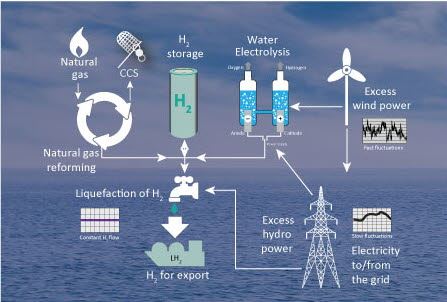Norway is an exporter of large volumes of fossil energy. Almost tenfold the amount of energy is exported as natural gas compared to the domestic hydropower generation. With the exception of years with precipitation levels considerably below normal, Norway is a net exporter of power, and this surplus is expected to increase in the future.
A feature likely to apply for several future gas discoveries as well as wind power developments is scattered and remote location with limited infrastructure and capacity for energy transmission to end users - so-called stranded energy.
For stranded gas, for which transport pipelines to markets are missing, a common solution is seaborne bulk transport of liquefied gas, as done in Hammerfest with gas from the Snøhvit field. For stranded renewable power, hydrogen production from water electrolysis is a possible technology for temporary energy storage.
Hyper takes on centralised large-scale production of liquid hydrogen. Such a production system represents a future-oriented technology offering multiple benefits, as energy from natural gas as well as renewable power can be converted to hydrogen and transported to markets. An additional feature is that CO2, a by-product from hydrogen production from natural gas, can be captured and stored. So, this energy chain can be climate-benign despite relying partly on fossil energy.
To achieve satisfactory energy and cost efficiency, several technologies require efficiency improvement and/or scaling-up from state of the art. Central processes in focus are reforming, CO2 capture, water electrolysis, hydrogen liquefaction and the interplay between these technologies in a complex system.
Through Hyper, SINTEF Energi aims to reduce technology gaps by utilising scientific expertise in collaboration with partners from industry and science.


